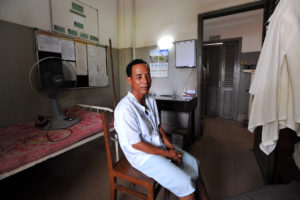How Can We Influence Gender-Related Barriers to Vasectomy Uptake?
Post by: Fabio Verani, Senior Technical Advisor for Gender/Men As Partners (MAP), EngenderHealth
The  conversation about vasectomy cannot be split apart from the broader conversation about gender equality and sexual and reproductive health (SRH).
conversation about vasectomy cannot be split apart from the broader conversation about gender equality and sexual and reproductive health (SRH).
Factors leading to high vasectomy rates
Countries with the highest vasectomy rates are those with relatively high gender equity and higher income, such as Australia, Canada, the Czech Republic, Denmark, New Zealand, Spain, South Korea, Switzerland and the United Kingdom.
However, income is not the only issue or even the key issue. In the United States, we see a three-to-one difference between tubal ligation (about 15% of women use this method) and vasectomy (about 5% of women rely on it), demonstrating relatively low support for vasectomy in this specific high-income country. Relatively higher rates of vasectomy are found in a few lower or middle income countries like Nepal or Brazil, reflecting that positive change is very possible in lower resource settings.
Globally the picture is less optimistic: about 220 million women get a tubal ligation and only 28 million men get a vasectomy every year.
Why such low rates of vasectomy adoption?
In part, the answer lies within the broader issues of gender equality and how that intersects with sexuality and SRH. The lower the support for more gender-equitable relationships (especially sexual/romantic relationships), the more difficult it is to see equitable participation by men in SRH generally, or in vasectomy specifically.
This inequitable participation of men is seen not just in family planning, but all over. We can also look at differences between men and women in terms of their time spent on child caregiving (with women spending more time caregiving than men in every country in the world). If that picture were more equitable, would the contraception discussion also be a bit more equitable?
In the future, maybe global rates for permanent methods will be equal or will be skewed in favor of the safer option (vasectomy). And perhaps nonpermanent family planning methods will have been developed for men and utilized by them as commonly as female methods. But, I think that this future will also have to be one in which gender equality has increased to the point where societies are able to conceive of and accept men’s equal responsibility in reproductive health.
Join the Discussion
In recognition of World Vasectomy Day, join the Johns Hopkins Center for Communication Programs (CCP), EngenderHealth, Georgetown University Institute for Reproductive Health and Marie Stopes International to explore gender-related barriers to uptake of vasectomy among men and couples in a facilitated discussion on Springboard for Health Communication Professionals November 14 -21.
Share your ideas on how social and behavior change communication (SBCC) can be used to address these barriers to increase knowledge, shift attitudes and cultural norms, and produce changes in a wide variety of behaviors.
 You must be a registered Springboard member to participate. To register:
You must be a registered Springboard member to participate. To register:
- Fill out the online registration form on Springboard.
- Activate your registration via the email you receive after filling out the registration form.
- Navigate to the conversation here.
You may post questions in advance. More about the facilitators:











Leave a Reply
Want to join the discussion?Feel free to contribute!